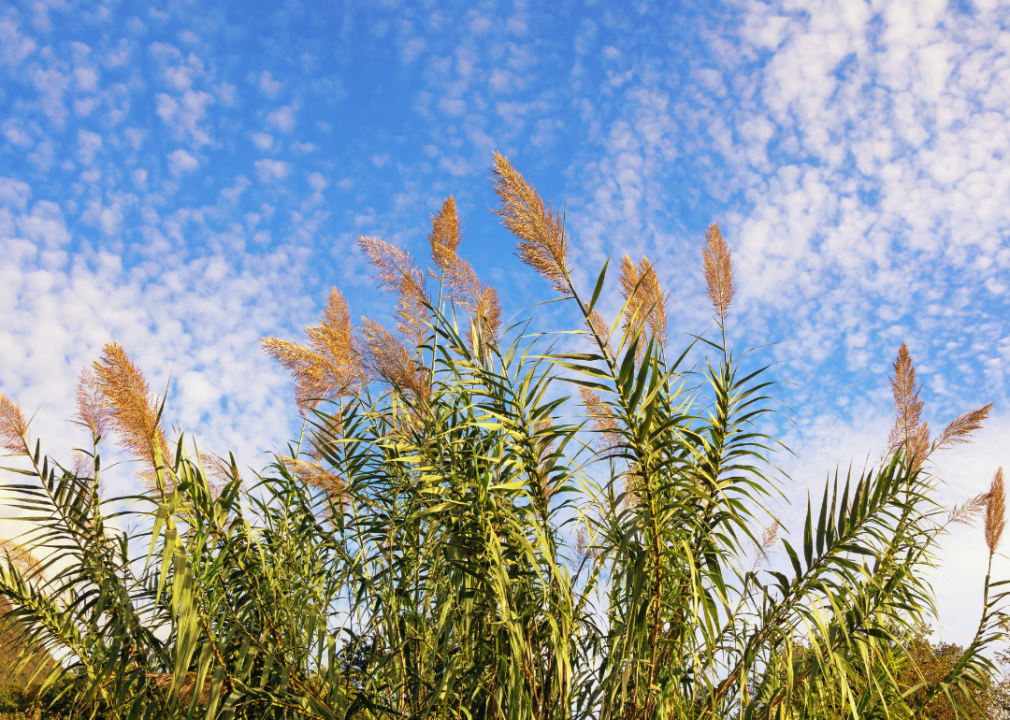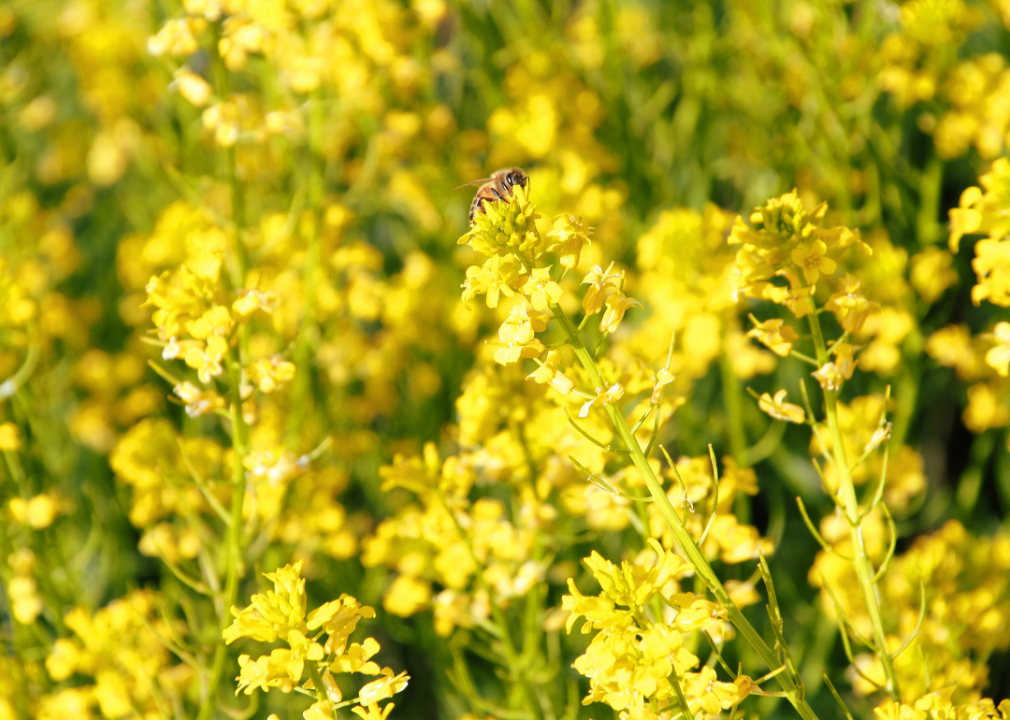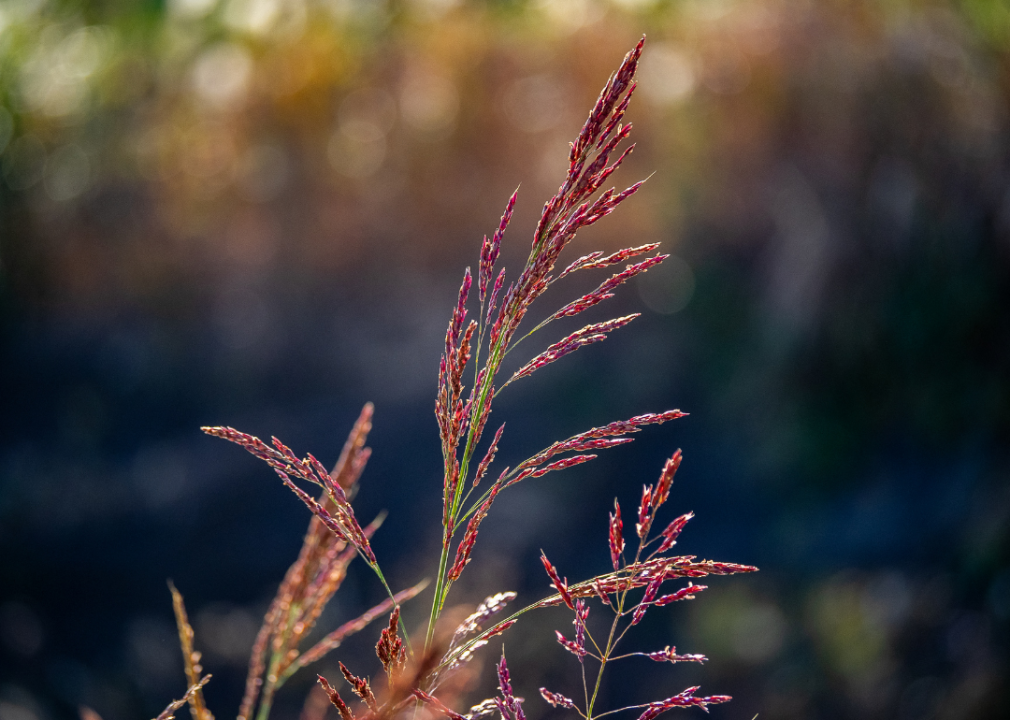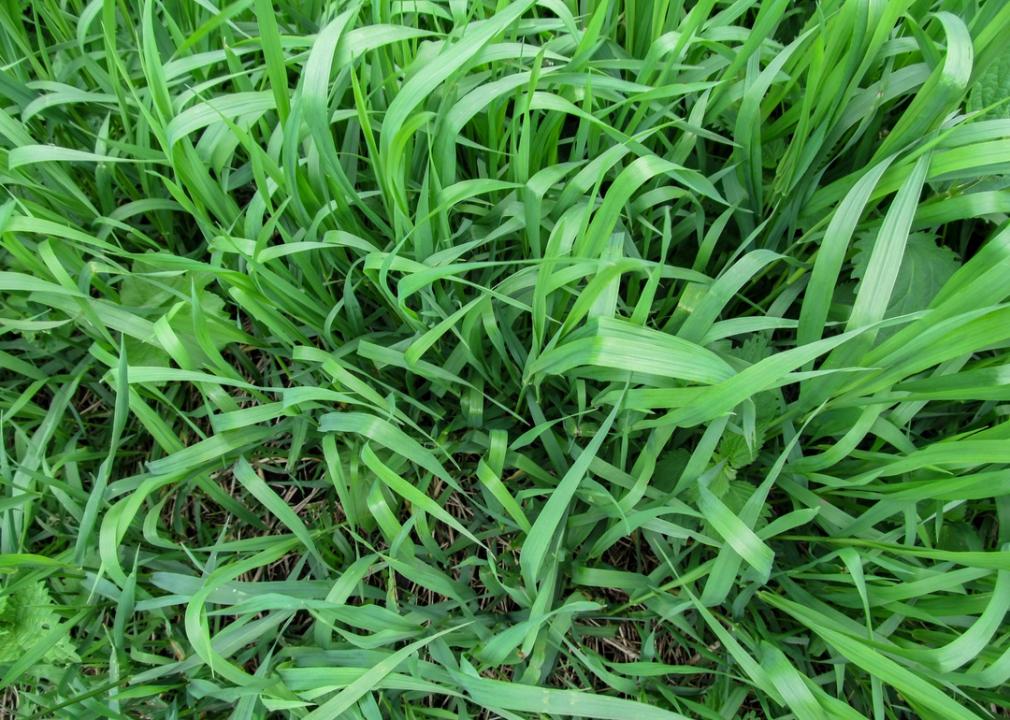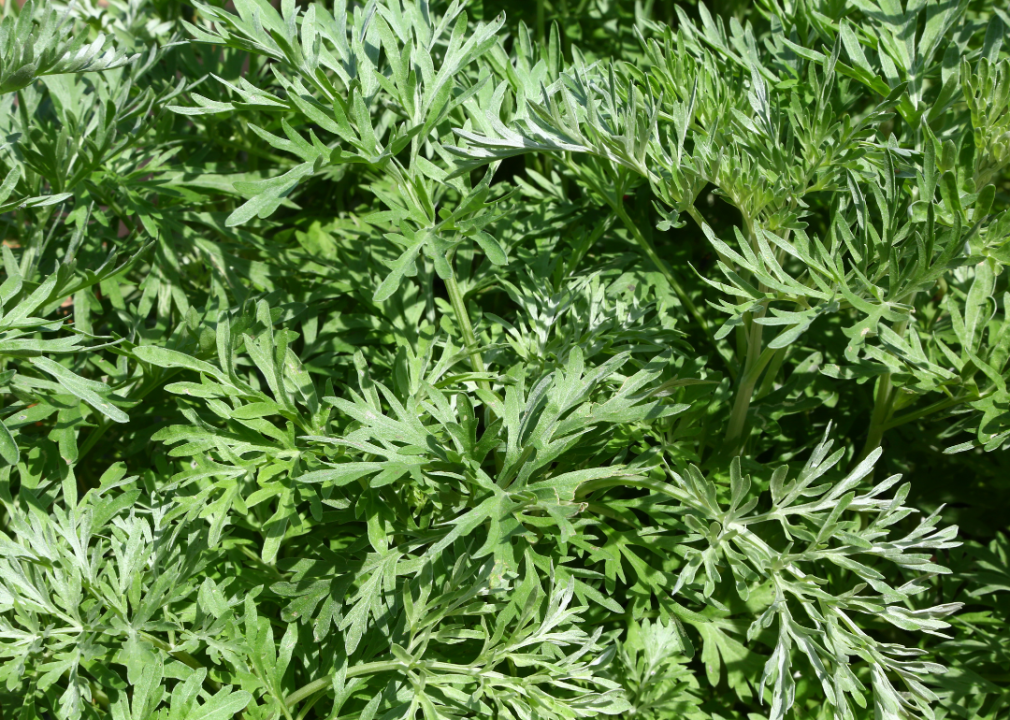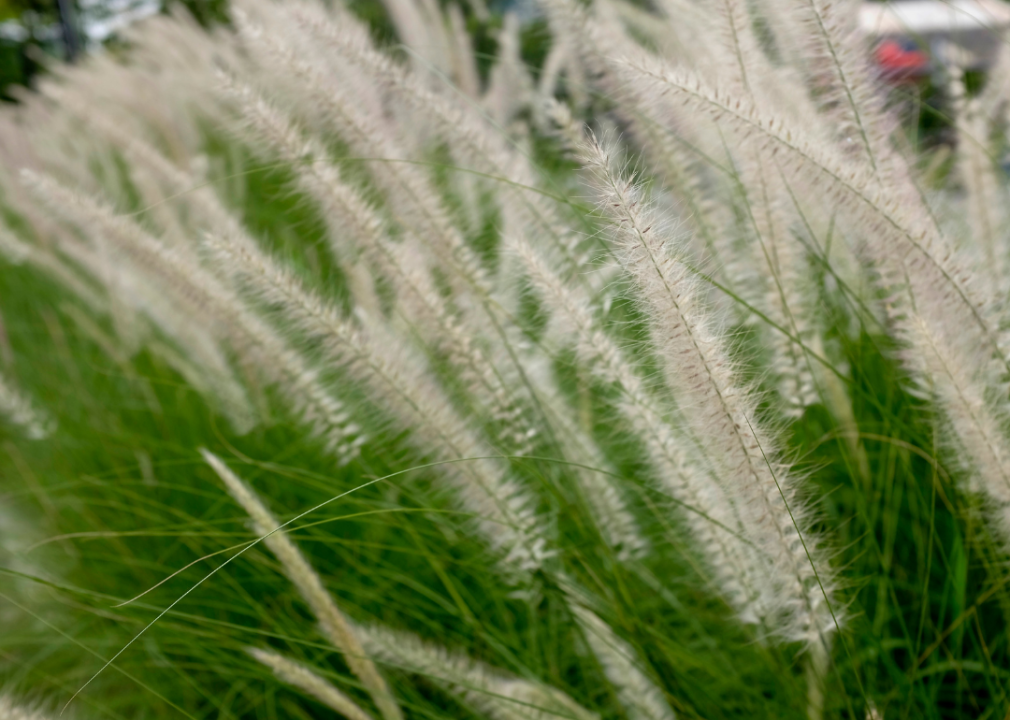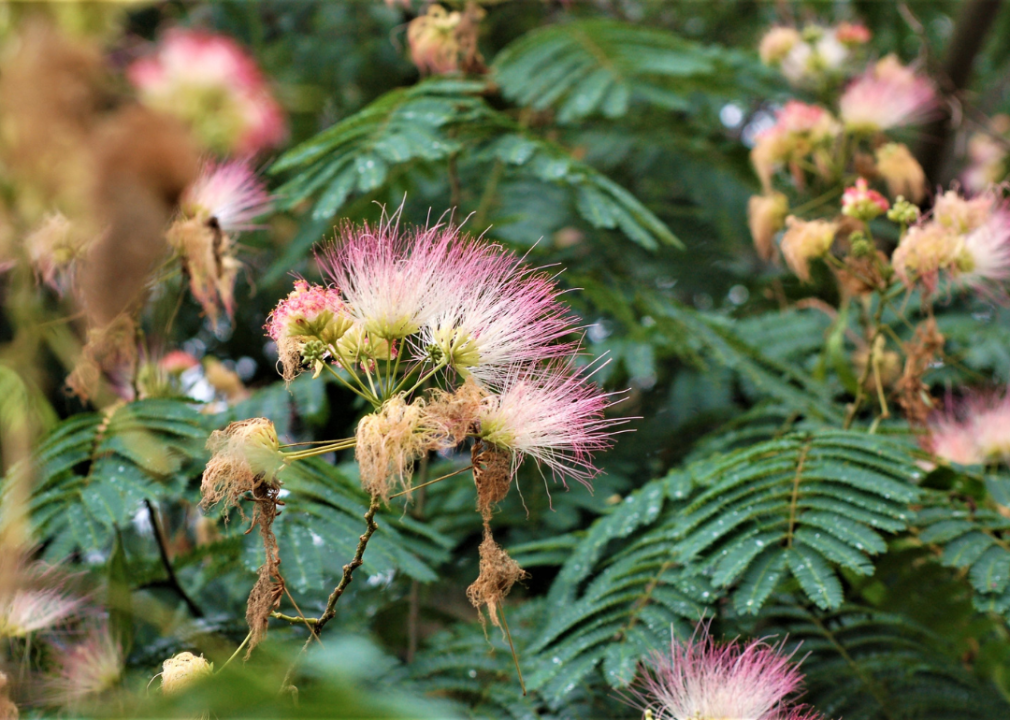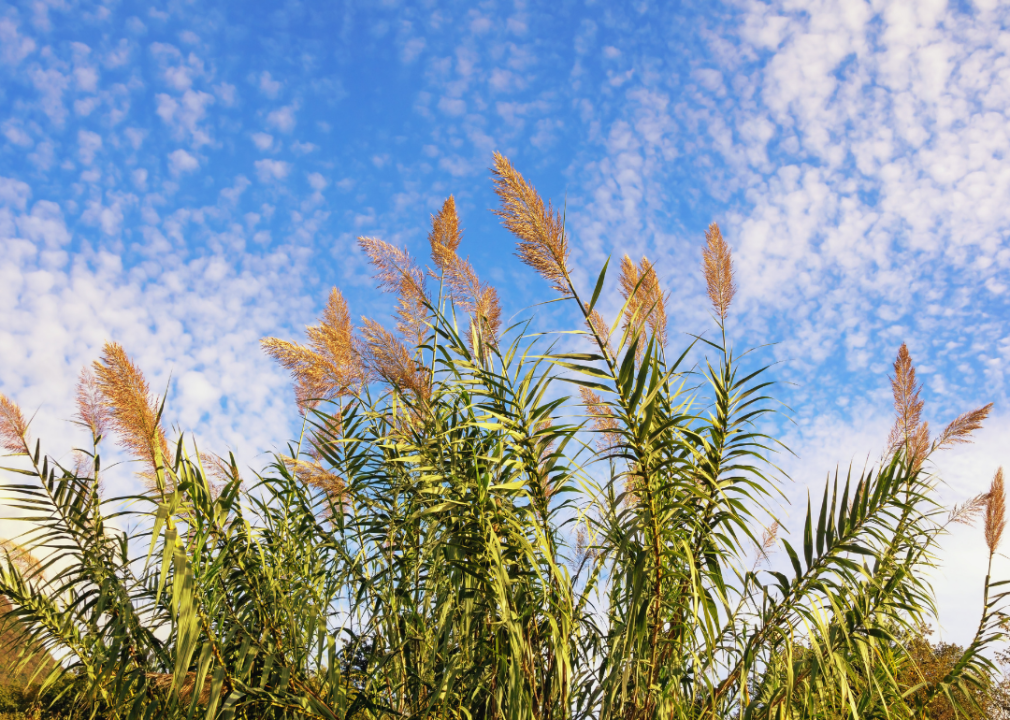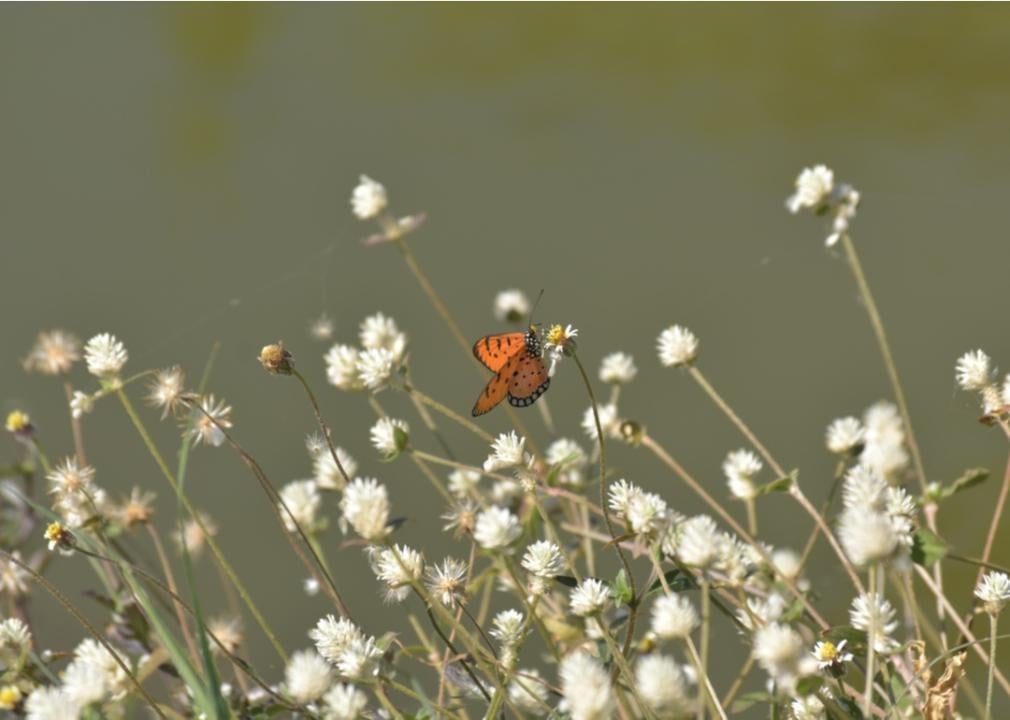Canva
10 invasive plants that can also set off allergies
Every spring, many people’s feelings transform to allergic reactions. Popular allergens are vegetation or weeds recognized as noxious weeds. Federal, condition, and local authorities lawfully categorize noxious weeds or vegetation to be deleterious to persons, wildlife, and agriculture. A lot of noxious vegetation or weeds are also thought of invasive, meaning they are not native to the regional ecosystem or even native to the U.S.
Individuals generally unfold invasive species, albeit unintentionally. For case in point, huge ships can carry aquatic organisms in ballast h2o and compact boats can carry them on their propellers. Seeds from crops used for decorative purposes can spread, allowing for them to improve in the wild.
Every single spring via autumn, vegetation release very small pollen grains that fertilize crops of the identical species. Most flowering crops that unfold their pollen by bugs do not cause allergies. Weeds, grasses, and trees are the most important sources of pollen that can induce allergies. An allergy to pollen is termed allergic rhinitis, more typically recognized as hay fever.
Wyndly compiled a record of 10 invasive species and outlined how they effect seasonal allergies, citing information from the U.S. Division of Agriculture and Invasive Species Atlas. Plants these types of as ragweed, which is native to the total continental U.S., are not provided.
![]()
Canva
Dalmatian toadflax
– Scientific name: Linaria dalmatica
– Indigenous habitat: Mediterranean area
– Launched to U.S.: Late 1800s or early 1900s
Dalmatian toadflax and yellow toadflax expand on the side of the street, in grasslands, and among the crops. Toadflax has an allergen index of 4 out of 10, creating it a average allergen. As they crop up in a lot of generally trekked destinations, these crops can aggravate hay fever for passersby.
Toadflax was at first introduced to the U.S. for decorative use, but it can also be employed to dye cloth. Yellow toadflax has also been applied as a folk treatment for liver illness. Both equally species of toadflax are perennials, and start out escalating early in the spring. Toadflax is really aggressive with other crops for house and mild and can spread rapidly, so it progressively suppresses the progress of native plant species.
Canva
Johnsongrass
– Scientific identify: Sorghum halepense
– Native habitat: Mediterranean area
– Introduced to U.S.: Early 1800s
Johnsongrass is a reasonable allergen and was at first launched in the U.S. as a forage crop. Johnsongrass spreads quickly in unique habitats, which include forests, fields, and wetlands. It kinds dense colonies, which can inhibit the progress of agricultural crops and stop tree seedlings from having root. It spreads immediately all occasions of yr, impacting allergic reactions year-round.
Johnsongrass triggers millions of dollars in dropped agricultural revenue in the U.S. every single calendar year by invading crops. For example, it can cut down the yield of sugarcane fields in Louisiana by as a great deal as 50%. It can also serve as the host for bugs, fungi, roundworms, and viruses that problems crops.
kosmos111 // Shutterstock
Russian knapweed
– Scientific identify: Rhaponticum repens
– Indigenous habitat: Eurasia
– Introduced to U.S.: Early 1900s
Russian knapweed was accidentally released to the U.S. via contaminated alfalfa seeds from the Turkestan region of Central Asia. These crops are associates of the daisy family, building any individual prone to daisy allergy symptoms also susceptible to Russian knapweed’s pollen.
Russian knapweed invades open up land and crowds out native plant species, including forage for animals. This plant can immediately get out of hand, resulting in infestations that worsen the good quality of crops for grazing animals.
Grazing animals typically avoid having Russian knapweed mainly because of its bitter taste. If eaten in adequate amounts by horses, Russian knapweed leads to a neurological condition termed nigropallidal encephalomalacia, or chewing condition. Horses with chewing ailment have difficulties consuming, consuming, and swallowing.
ioanna_alexa // Shutterstock
Quackgrass
– Scientific identify: Elymus repens
– Native habitat: Eurasia
– Introduced to U.S.: 1600s
Quackgrass grows in disturbed open areas, where by organic vegetation has been removed to expose the fundamental soil. This plant can speedily become an infestation via rhizomes, which requires plant roots invading the soil. Chopping off the grassy tops is not adequate the plant’s root program has to be eradicated as effectively. It usually is found in pastures, roadsides, and gardens. It was introduced in the U.S. by incident, most likely via contaminated seeds.
Quackgrass bouquets in the early summer season, when it spreads pollen and contributes to hay fever. This plant competes with agricultural crops and native plant species. It sorts dense brush that limits the regeneration of woody plants and trees. It also inhibits the restoration of croplands and pastures, minimizing the availability of soil moisture and vital nutrients.
Canva
Absinth wormwood
– Scientific title: Artemisia absinthium
– Native habitat: Europe, northern Asia and northern Africa
– Introduced to U.S.: 1840s
Absinth wormwood, also usually acknowledged as mugwort, was initially released in the U.S. for use as an antiseptic liniment. This plant starts to grow in late April and early Could, not flowering till July or August. People who put up with from spring and summer seasonal allergic reactions may perhaps not be spared from absinth wormwood—especially since this plant is perennial.
The leaves give foods a sage-like taste and are made use of to make vermouth. Like Russian knapweed, Absinth wormwood is toxic to horses. It also taints the milk of cattle that have eaten it.
Canva
Cogongrass
– Scientific identify: Imperata cylindrica
– Indigenous habitat: East Africa (unsure)
– Released to U.S.: Louisiana in 1912 and Florida in the 1930s
A single of the worst invasive species in the world, cogongrass results in ecological and financial injury to forests, agriculture, and natural ecosystems by infesting native wildlife. Cogongrass pollinates by the wind, meaning it can unfold rapidly as its carried along in the air we breathe. It bouquets among March and May perhaps, on time for spring hay fever.
Cogongrass was unintentionally introduced into the U.S. as a packaging material for oranges delivered from Japan to Alabama in 1912. It was also analyzed in Mississippi and Florida as a attainable forage and for its potential for erosion management.
Canva
Mimosa tree
– Scientific name: Albizia julibrissin
– Indigenous habitat: Iran to Japan
– Introduced to U.S.: 1700s
Mimosa trees are smaller trees, less than 50 ft in peak, that often improve with several trunks. They can invade any disturbed spot, this kind of as stream banks and roadsides. Mimosa trees are difficult to take out mainly because of the extended-lived seeds that improve in extensive pods and sprout in late summer months. Native to Asia, mimosa trees had been launched to the U.S. in the mid-1700s. The trees are extensively utilized for decorative functions.
Bees and butterflies adore mimosa trees, spreading their pollen from a single plant to the up coming. This can help the plant distribute and can also launch allergens into the air and on to other plants insects pollinate.
rwtrahul // Shutterstock
Palmer’s amaranth
– Scientific name: Amaranthus palmeri S.Watson
– Native habitat: Southwestern U.S.
– Launched to U.S.: Noted in Virginia in 1915
Palmer’s amaranth is a significant allergen and is one particular of the most popular and economically devastating weeds in the southwestern U.S. The plant’s pollen spreads by the wind, which can irritate allergy symptoms. Palmer’s amaranth very likely spreads on the floor by means of contaminated seeds: The latest infestations in the Midwest ended up traced to contaminated seeding mixes from the Conservation Reserve Application.
Palmer amaranth thrives in sizzling weather conditions and tolerates drought effectively, making it much more resistant to excessive temperature designs than most native vegetation. It has an effect on corn, cotton, and soybean crops. Some populations of Palmer’s amaranth are even resistant to herbicides which include glyphosate.
Canva
Big reed
– Scientific identify: Arundo donax
– Native habitat: Probable eastern Asia
– Introduced to U.S.: Early 1800’s
A prolific pollen producer, big reed is a moderate allergen and has been launched globally for erosion manage, ornamental use, and the generation of reed for paper, pulp, and musical devices. It grows in dense stands, with lots of crops for each acre—replacing indigenous vegetation. This displacement of vegetation leads to improvements to meals resources, and the infestation of giant reed cuts down wildlife habitats, including people of amphibians and birds.
The big reed is a member of the grass loved ones, which is normally deemed a sizeable resource of allergic reactions, and releases its pollen involving July and Oct.
Bew Nantaphong // Shutterstock
Alligatorweed
– Scientific name: Alternanthera philoxeroides
– Indigenous habitat: South The us
– Released to U.S.: Documented in Alabama in 1897
Alligatorweed is a moderate allergen that grows in thick mats in shallow, slow-moving drinking water, ditches, marshes, and ponds. These mats inhibit the advancement of indigenous aquatic vegetation, slow or stop h2o circulation, raise sedimentation concentrations, and reduce water sporting activities, such as boating, fishing, and swimming.
The crops get rid of pollen 12 months-spherical and live for decades. Alligatorweed was released into the U.S. from its native South The us in ballast water, which is held in the cargo holds of ships to offer security and increase maneuverability whilst at sea.
This story at first appeared on Wyndly
and was developed and distributed in partnership with Stacker Studio.

